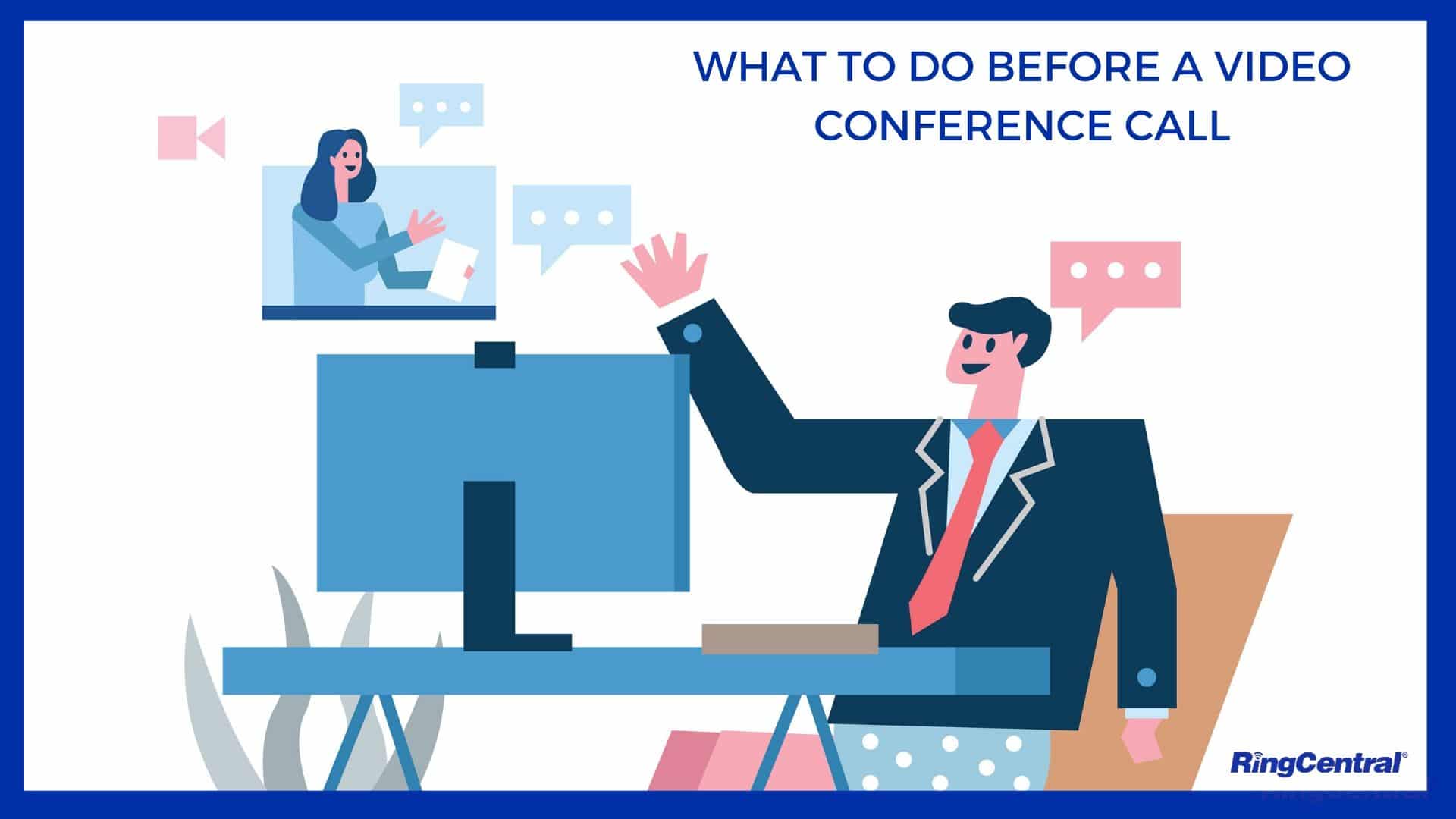Video conferencing is at the heart of business communication today and video conference etiquette is a must.
In an era where many teams have suddenly had to work from home, video ensures that teams can stay connected. More than any other communication tool, video mimics the nuances of face-to-face conversation. This means that organisations with a video set-up can maintain the humanity they need for meaningful conversations.
As the demand for remote working accelerates, the need for reliable video will grow. For many companies, this means two things. First, business leaders need to find the right video tools to support their employees. Secondly, team members need to learn how to leverage those services.
Here’s your guide to video conferencing etiquette.
Video conferencing etiquette tips: Best practices
If you’re familiar with in-person conversations, a remote video conference is quite a change of pace. You might feel uncomfortable with your technology initially. There’s also a risk that internet connections at home and hardware could be less than ideal.
In an evolving remote workplace, the video conference call will be an essential part of maintaining connections with the entire team, no matter where employees are. For business leaders, this means setting some policies in place to guide their staff. For instance:
-
Provide guidance for a successful setup
Make sure your employees know what technology to use. Suggest cameras and headsets that might suit your team. Introduce your employees to the desktop apps they’ll be using, and explain how they work. Look into potential bandwidth issues. Is there a way that you can help employees with poor connections to join meetings?
-
Always have an agenda
There’s nothing more frustrating than a meeting with no purpose. Your employees are busy. Make sure your meeting has a clear structure and goal. That way, you’ll all know exactly what you’re doing from the moment everyone logs in. Agendas don’t have to be long and complicated. A brief outline of what you’re going to cover should be enough. Providing an agenda means attendees know what to expect. You’ll also be less likely to go off on a tangent.
-
Invite the right people
The only people who should be in a meeting are the people who need to be there. Inviting everyone to the conversation “just in case” will just hold you back. It’s also worth making sure that anyone you need to be in your meeting can attend at the right time. If anyone’s not going to be available, look into tools that will record the meeting so you can share it later.
-
Be prepared
If you’re going to be discussing some critical documents or graphs, have them ready. You might share some online resources with your team in advance. This will ensure that everyone is ready to jump into action fast. Being prepared also means learning how to use presentation tools in your video conferencing software.
What to do before a video conference call

The process before a remote video conference is all about preparation.
The things you do before you hit the call button should ensure that you can deliver the best experience possible to your coworkers.
1. Test your equipment
Start by testing your equipment. This means making sure that you have a good internet connection, and that everything is properly plugged in. Check your:
- Video camera: Make sure that everyone can see you. Ensure that the image isn’t too zoomed-in. If you’ve got clutter in the background of your shot, now might be a good time to clean up.
- Audio: Whether you’re using a conference phone or a microphone, your voice needs to sound clear. Test your microphone and make sure it’s properly set up with your computer in advance. You can even use your smartphone in some cases. Just ensure you don’t have any interference.
- Software: Check all the features of the video conferencing software you’ll be using. Do you know how to mute people on the call if necessary? Can you record the meeting? How will you share files and documents to give context to your point. Do you know how to share your screen, or just a window on your PC?
Once you’re done testing, the next step is to prepare for your meeting.

2. Prepare for the video call
Preparing for your meeting encompasses everything from making sure you have the right information, to ensuring you look professional. Go through your meeting agenda and ensure that you’ve got all of the documents and tools you need to deliver the right message. Sharing essential information with your team in advance can save some time and effort.
If you’re going to need water to keep you hydrated through the meeting, get it now. Don’t rush out mid-meeting. Ensure that you’re comfortable on your chair, and that you’re dressed professionally. It’s also worth making sure that the space you’re connecting from is quiet. Go somewhere with plenty of light and no distractions. Shut pets out of the room and double-check your internet connection.
3. Be punctual
Make sure that you arrive to the meeting on time. Just because you’re using video conferencing instead of meeting a team in person doesn’t mean you can turn up whenever. If you’re worried that you might take a while to connect, start loading the conference ten minutes early. It’s better to be sitting around waiting for your attendees, than to have them wait for you.
Punctuality should also be the theme of the remainder of your meeting. Make sure that you stick to your agenda and cover everything in the time-frame you’ve given your team. Don’t let the conversation drag on too much with small talk.
How to do a video conference: During the call

Once you’re in your conference call, it’s time to get to work.
If you haven’t had a chance to see your staff for a while, it may be tempting to catch up. Although it’s okay to have a couple of minutes of chat, you’ll need to launch into the agenda as quickly as possible. Make sure that you have a list of essential topics in front of you to cover.
During the call
1. Stay completely focused
Your attention needs to be 100% on the conference call, and nothing else. That means that you may need to shut down your social media pages or ignore your email for a little while.
When you’re busy, it’s tempting to get other things done while you’re in your meeting. However, this means you’re more likely to lose your train of thought. Get rid of anything that might distract you so that you can pay complete attention to your staff.
2. Speak up
Whether you’re hosting a call or you’re just part of it, make sure that you talk clearly, so your entire team can hear you. Don’t mumble your message or speak too far away from the microphone. If you’re contributing to the meeting, look for opportunities to chime in with your thoughts.
When someone else is speaking, muting, your microphone is helpful. It ensures that background noise in your home won’t distract other listeners. However, you shouldn’t be on mute for the entire conversation. You will need to say your part too!
3. Make the most of your tools
Video conferencing is an excellent way to improve collaboration. When you can see your team members face-to-face, it’s easier to have a valuable connection. However, you don’t have to rely on just audio and video to make your point. It might help to occasionally type messages or share links with your team, rather than saying something out-loud.
Your video conferencing software is likely to come with features for screen-sharing too. This will make it easier to bring context to your conversations and explain crucial topics. Make the most of all the functionalities you can access.
After your remote video conference
When your video conference call is over, you still have work to do. After you’ve covered all of the items on your agenda, make sure you leave room at the end of the discussion for questions. It’s important for other people in your team to be able to clarify things if they’re unsure.
Let your employees know where they can contact you if they come up with questions after the call has ended too. This could mean creating a room where you can talk through instant-messaging using a tool like RingCentral Glip. It could also mean providing your team with a schedule of when you’ll be available to chat.
Once your call is over, it’s also worth following up with each team member. Make sure that everyone is aware of the next steps that they need to take, and how you’re going to be measuring success. If you have a project management tool, you might assign tasks with deadlines. This will help to keep everyone on track as they move forward.
The dos and don’ts of video conferencing

As you and your team start to feel more comfortable in a virtual setting, you’ll find your own ways to make video conferencing feel more natural. In the meantime, brushing up on video conference etiquette will help you to get the most from your conversations.
To keep you on the right track, here are some handy do’s and don’ts to remember.
Do’s:
- Check your video conferencing equipment in advance to make sure everything works. Make sure your team members all feel comfortable with their tech.
- Provide training or extra support to team members who need help with their software. If some of your employees are more comfortable than others, start a mentorship plan.
- Follow a plan and avoid going off-track. If you want to have a catch-up conversation, you can schedule this for a later time.
- Be punctual and courteous. Arrive to the meeting on time and try to end it at the same time too. Make sure that you also give your team members plenty of opportunities to talk.
- Use the right video conferencing tools. Ensure that you have all the features you need, from HD conferencing, to screen sharing and even recording options.
- Follow up with your team members. Make sure that everyone understood the meeting and what they need to do next.
Don’ts:
- Multitask or try to do dozens of things at once. You can’t have an effective meeting if you’re also eating or checking your emails.
- Join the meeting from anywhere. A busy coffee shop isn’t a good place to talk about private business matters. Find a space that’s quiet and secluded.
- Have too much tech running in the background. Other applications could eat up your bandwidth and reduce the quality of your control.
- Call in your PJs. Just because you’re working at home doesn’t mean you shouldn’t dress like a professional. Sit up straight and dress as you would in the office.
Making the most of the video conference call
The video conference is one of the most powerful tools we have in the remote landscape. Video allows employees to connect face-to-face, wherever they are. These visual meetings deliver better context, improved engagement, and less confusion for your teams. However, just like any other essential technology, you need to know how to make the most of your conferencing tools.
Remote work shouldn’t be something that isolates a team or leads to poor engagement. In the years to come, we’ll all be more reliant on remote employees to run an effective team. Using the video conferencing tips above, you can make sure that everyone in your team feels confident and connected. Video conferencing is the key to successful remote working. Make sure that you know how to use it to your advantage.
Originally published Jun 24, 2020, updated Jan 17, 2023
